*NURSING > QUESTIONS & ANSWERS > ATI RN COMPREHENSIVE PREDICTOR (All)
ATI RN COMPREHENSIVE PREDICTOR
Document Content and Description Below
1. The nurse suspects the patient has increased afterload. Which piece of equipment should the nurse obtain to determine the presence of this condition? a. Pulse oximeter b. Oxygen cannula c. Blo... od pressure cuff d. Yankauer suction tip catheter ANS: C A blood pressure cuf is needed. The diastolic aortic pressure is a good clinical measure of afterload. Afterload is the resistance to left ventricular ejection. In hypertension the afterload increases, making cardiac workload also increase. A pulse oximeter is used to monitor the level of arterial oxygen saturation; it will not help determine increased afterload. While an oxygen cannula may be needed to help decrease the efects of increased afterload, it will not help determine the presence of afterload. A Yankauer suction tip catheter is used to suction the oral cavity. 2. A patient has heart failure and cardiac output is decreased. Which the formula can the nurse use to calculate cardiac output? a. Myocardial contractility × Myocardial blood flow b. Ventricular filling time/Diastolic filling time c. Stroke volume × Heart rate d. Preload/Afterload ANS: C237 Cardiac output can be calculated by multiplying the stroke volume and the heart rate. The other options are not measures of cardiac output. 3. A patient’s heart rate increased from 94 to 164 beats/min. What will the nurse expect? a. Increase in diastolic filling time b. Decrease in hemoglobin level c. Decrease in cardiac output d. Increase in stroke volume ANS: C With a sustained heart rate greater than 160 beats/min, diastolic filling time decreases, decreasing stroke volume, and cardiac output. The hemoglobin level would not be affected. 4. The nurse is careful to monitor a patient’s cardiac output. Which goal is the nurse trying to achieve? a. To determine peripheral extremity circulation b. To determine oxygenation requirements c. To determine cardiac dysrhythmias d. To determine ventilation status ANS: A The cardiac output indicates how much blood is being circulated systemically throughout the body to the periphery. The amount of blood ejected from the left ventricle each minute is the cardiac output. Oxygen status would be determined by pulse oximetry and the presence of cyanosis. Cardiac dysrhythmias are an electrical [Show More]
Last updated: 1 year ago
Preview 1 out of 19 pages
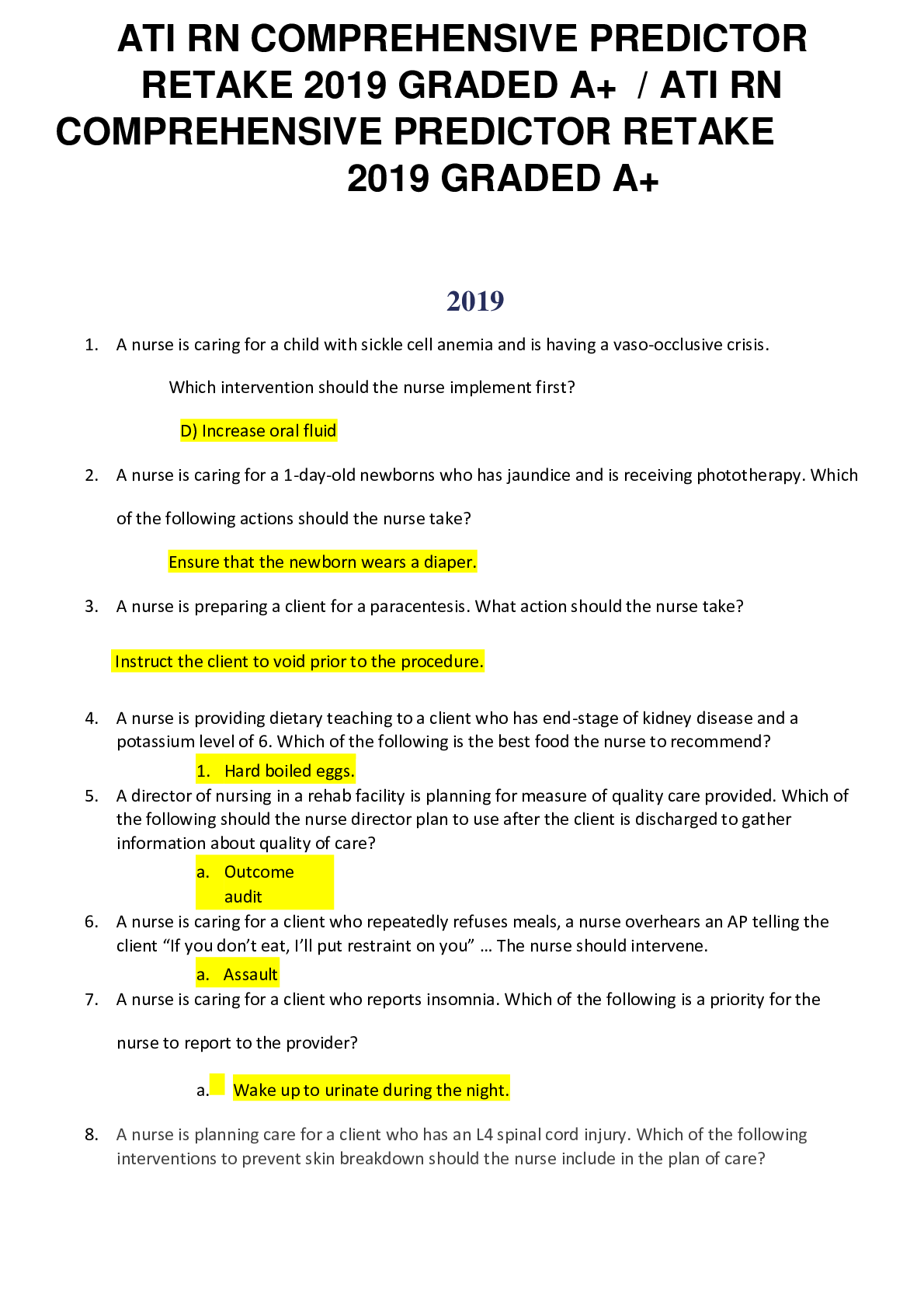
Reviews( 0 )
Document information
Connected school, study & course
About the document
Uploaded On
Aug 11, 2022
Number of pages
19
Written in
Additional information
This document has been written for:
Uploaded
Aug 11, 2022
Downloads
0
Views
17

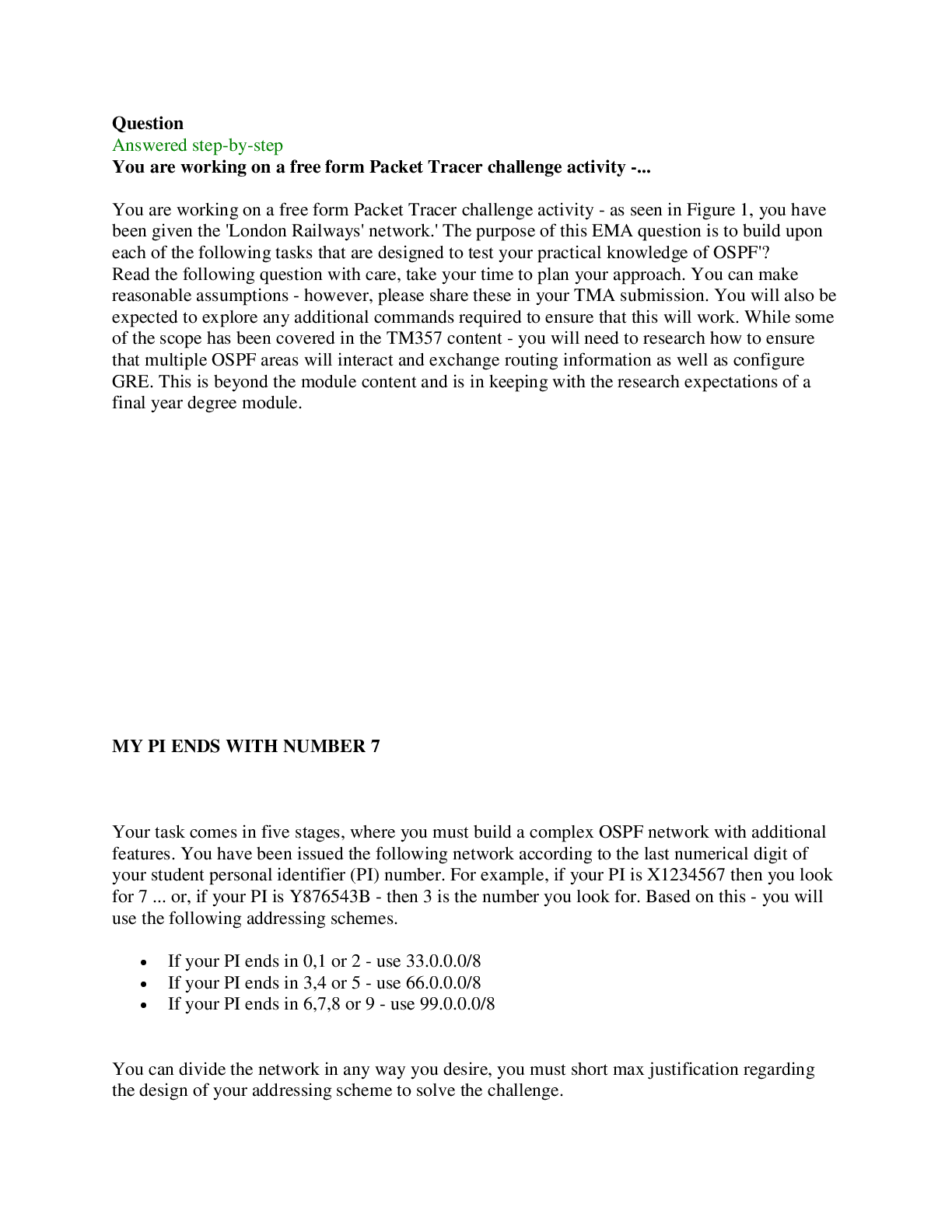


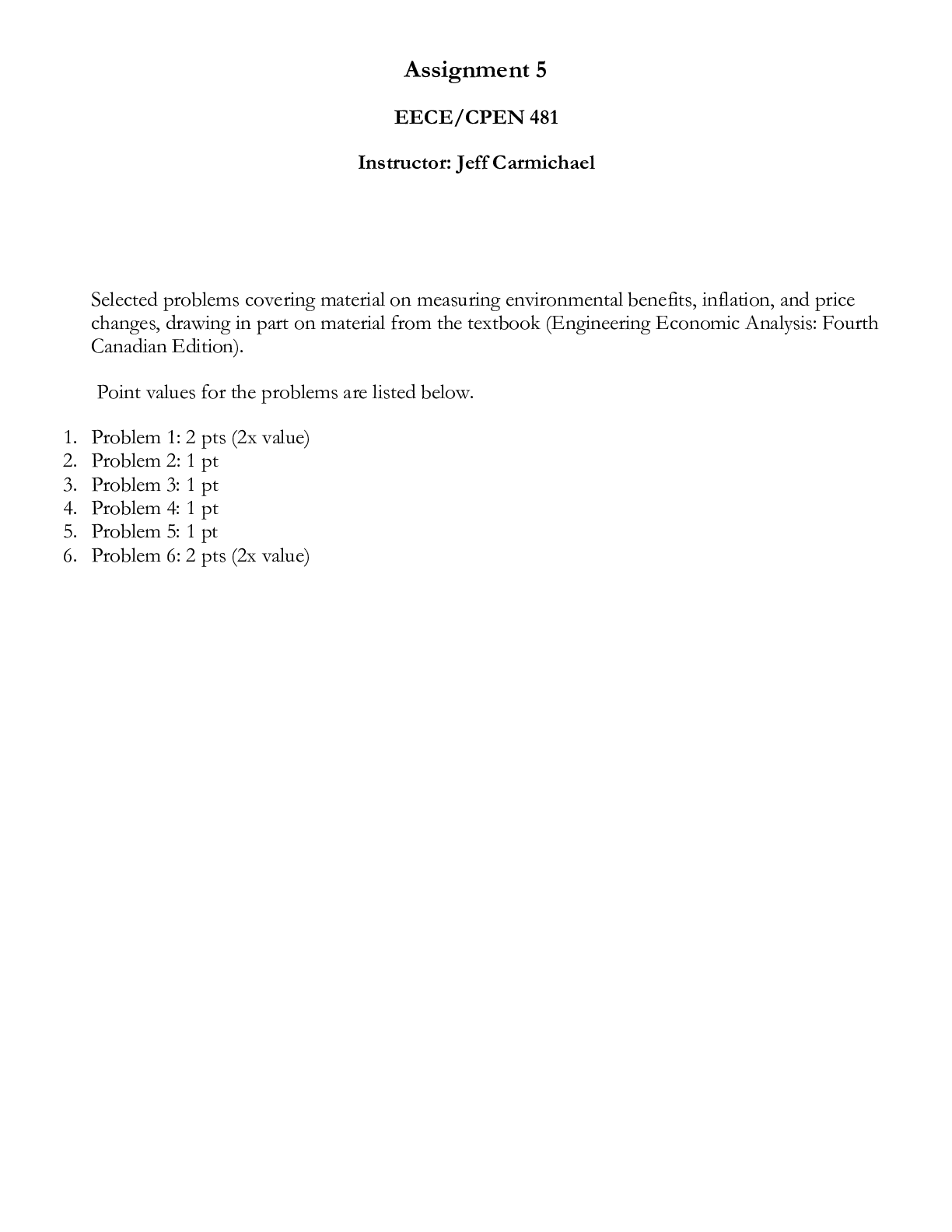



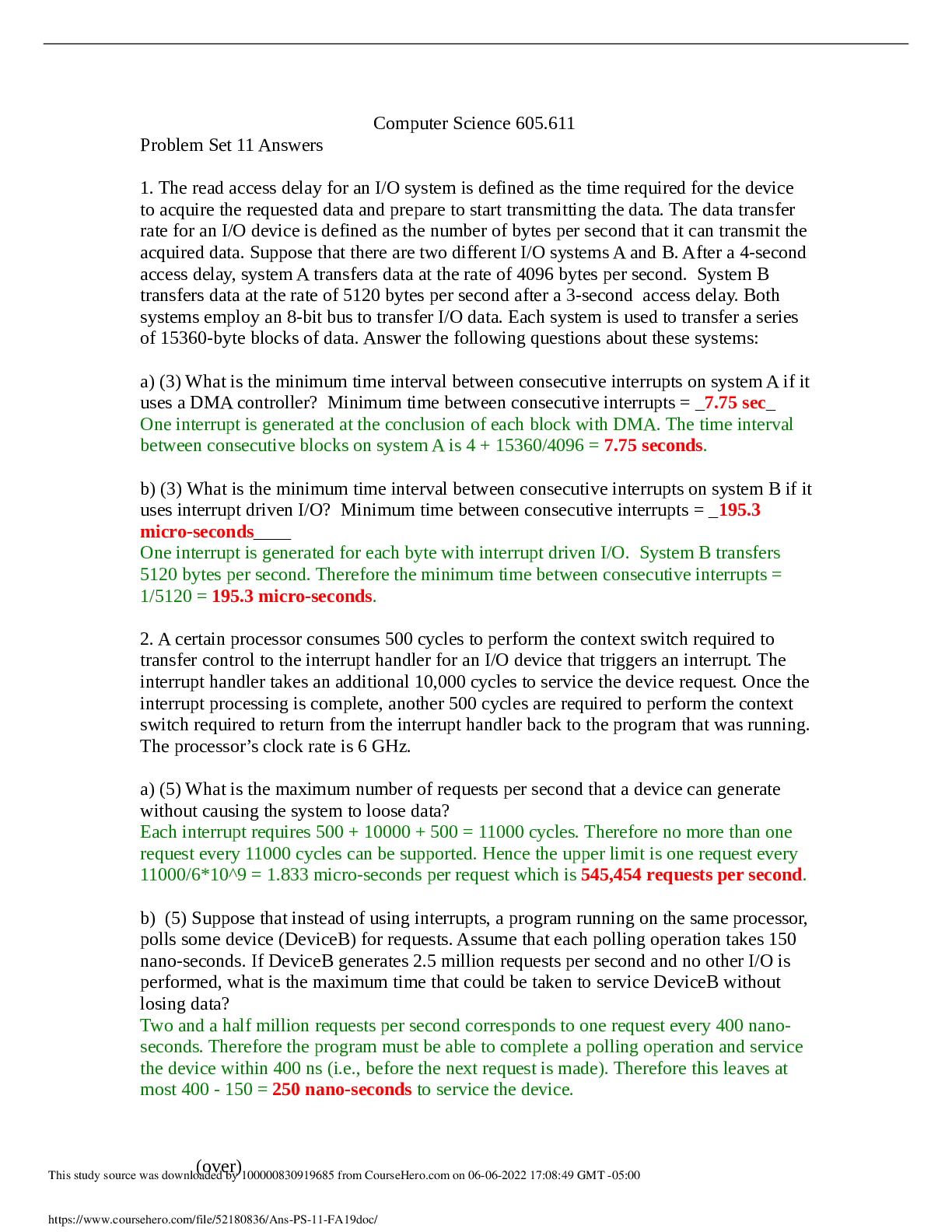




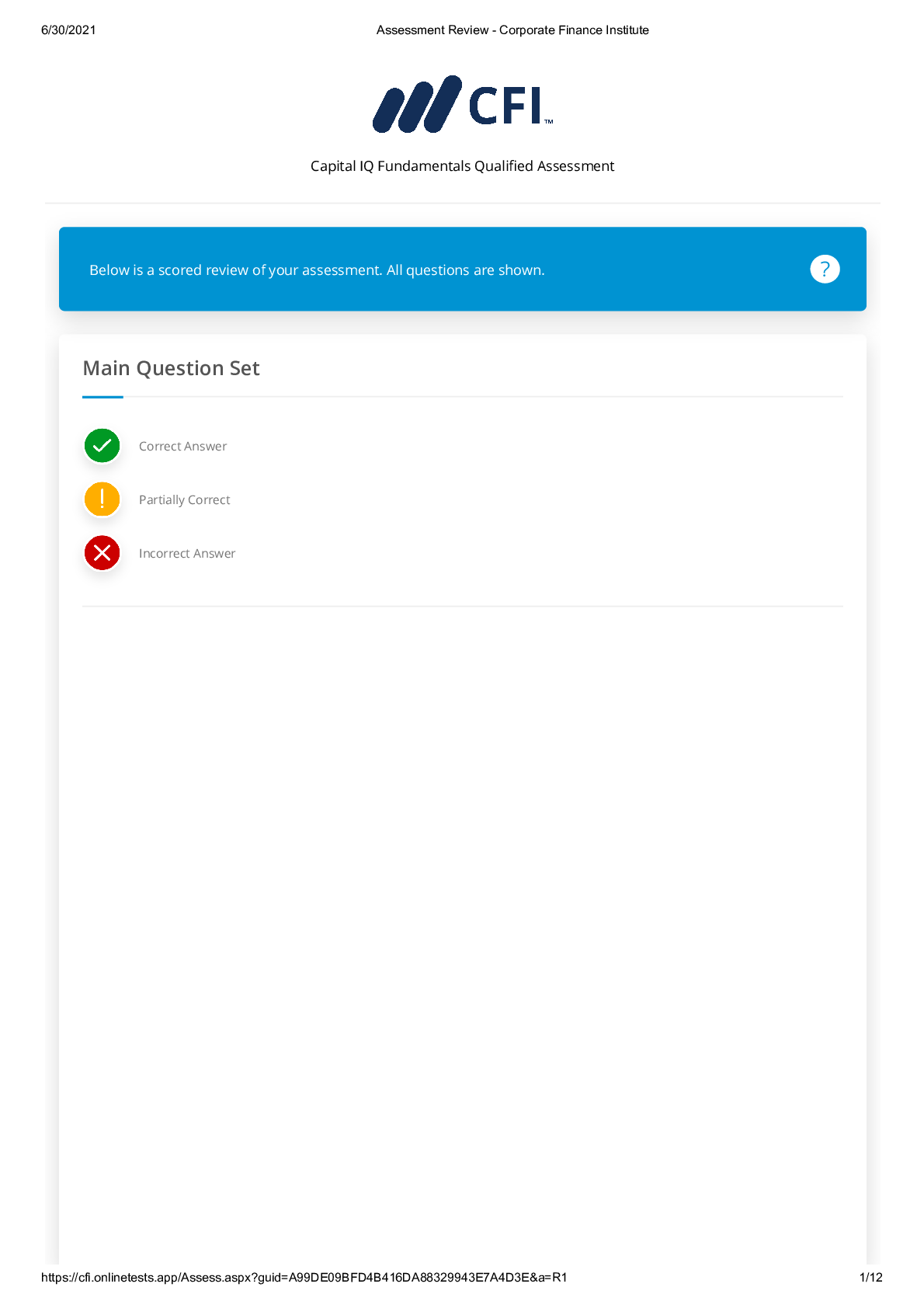
.png)




.png)

.png)




.png)
.png)

.png)




.png)
.png)

